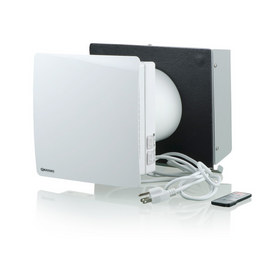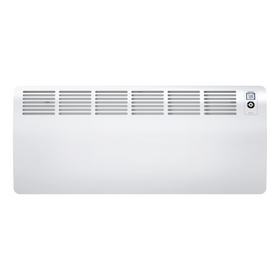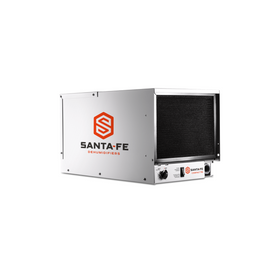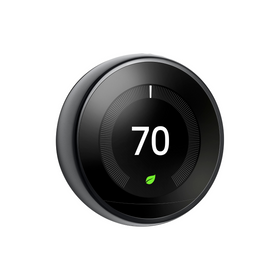
Permaculture: Reducing Your Home's Footprint
Last Updated: Feb 20, 2025In the last article, we covered the ins and outs of the first three permaculture principles. Today, we're back again to look at some more ways you can help reduce your environmental footprint at home with the following three principles (principles 4 through 6 out of 12).
While the climate crisis takes the global stage and we become more aware of the dangers of our carbon emissions, another piece of the puzzle comes from our consumption habits. Large amounts of energy and fuel production and ship the items that we buy on the global market. The permaculture principles discussed in this article look at ways to regulate what and how we bring things into our homes and further reduce our output waste stream.
Principle #4: Apply Self-Regulation and Accept Feedback
The fourth principle of permaculture teaches everyone that self-regulation today, at work or home, helps build a world for future generations with the same level of comfort we enjoy today. Doing this is simple: you only take what you need and say "no" to what you do not need.
With this approach, applying self-regulation has the added benefit of reducing our footprint. Choosing fresh fruits and vegetables, for example, is inherently better than processed food packaged in three different layers of plastic. This form of regulation isn't going to be accessible initially, and that's where the "accept feedback" portion comes in.
If you're finding it is just too hard to cut that venti latte out of your morning routine, that's okay. Like choosing the next size down, small changes are an excellent transitional step into one day making your coffee at home. The key is to not change everything at once, or the small changes begin to look like impossible hurdles.
Table of Contents
- Principle #5: Use and Value Renewable Resources and Services
- Principle #6: Produce No Waste

As you move into a lifestyle of voluntary simplicity, you can begin to look at things like your garden and estimate not only how much food you'll be producing but how long it will remain fresh and how you will need to adjust to make the systems last. The more food you can grow at home, the less food travels to the local grocery store.
Accepting feedback is the end of the permaculture design process. It teaches you to see how your system works through pattern observation (principle #1), accept what isn't working, and adopt a new process that you hope will work better. The cycle then repeats, and you get to watch it develop all over again. This process helps build self-reliance, and producing enough for your family is a great thing that cuts back on costs during shopping trips.
Principle #5: Use and Value Renewable Resources and Services
We typically think of solar panels, wind turbines, and hydroelectric dams when we talk about renewable resources. It's more general: a renewable resource is regenerated sustainably and can include sustainably managed lumber, hemp, or even wool. Renewable energy reduces our overall ecological footprint by cutting down on our usage of non-renewable energy sources like gas and coal.
Sun, wind, water, and coppice (a type of sustainably harvested wood) are the most common forms of renewable resources. Within the city limits, solar panels are your best bet in harnessing renewable energy. Adding a greenhouse to the south-facing side of your house and adding thermal masses allows your home to take advantage of the sun and turns the area into a heat sink. Coppice for your wood stove or fireplace is another great option that has been with us since we first put sticks on fire. With a little bit of backyard, you can grow alder, black locust, elderberry, or chestnut. The latter two also bear edible fruit and nuts, taking advantage of Principle #3: Obtain a Yield.
As you move more rural, the options expand. A small-scale wind turbine at the right spot on a property can give you extra energy on windy days. With the right site, even micro-hydroelectric can be possible, but this is dependent on a stream's flow and the stream's head (the vertical distance the stream travels). Always be sure to check with your local officials for permits or restrictions before working on streams or installing a wind turbine.
Some properties are large and difficult to manage without some form of machinery. But what about animals? Animals as a means for property management can be considered a renewable resource when taken care of properly. On farms, animals like horses have been used for hundreds of years to till fields and transportation. Their fuel is vegetation, which catches and stores the sun's energy (Principle #2).
Money Saving Home Improvement Products
Shop home improvement products that directly contribute to saving money through their use, whether through energy savings or lower maintenance costs.

Vents TwinFresh Comfo RA1-50-2 Ductless Energy Recovery Ventilator
Vents
In Stock

AFM Safecoat Almighty Adhesive Case of 12
AFM Safecoat
In Stock

Emporia Classic Level 2 48 AMP EV Charger UL Listed
Emporia
In Stock
2 Colors

Stiebel Eltron Accelera 300 E Heat Pump Water Heater
Stiebel Eltron
In Stock

Stiebel Eltron CON 300-2 Premium Wall-Mounted Convection Heater - 202030
Stiebel Eltron
In Stock

Santa Fe Compact70 Dehumidifier
Santa Fe
In Stock

AFM Safecoat 3 in 1 Adhesive
AFM Safecoat
In Stock

Google Nest Learning Thermostat
In Stock
6 Colors

Stiebel Eltron DHC-E 8/10-2 Plus Point-of-Use Electric Tankless Water Heater - 202145
Stiebel Eltron
In Stock

Stiebel Eltron CON 150-1 Premium Wall-Mounted Convection Heater - 202026
Stiebel Eltron
In Stock

When you drive a car off the lot, its value depreciates; but its worth appreciates when you train and care for an animal. And remember, machines can't have babies, but animals can, making them a regenerative resource when managed humanely. This means that when you bring a working animal into your family, your family will have the potential to grow together. And if you don't have the space for horses and cattle, your children's guinea pigs and rabbits could always be used to trim and fertilize the lawn!
We have to remember that renewable resources are the future of a sustainable society, but it's okay if we can't all transition today. Make small changes to move your home towards a more sustainable future, and eventually, you'll reach your goal.
Principle #6: Produce No Waste
We live in a throw-away society, consuming resources at a faster rate than can be produced by our planet in a year. Earth Overshoot Day, currently at July 29th, is the calculated point at which humanity consumes more resources than the planet can produce in an entire year.
Reducing our waste output is fundamental in making our homes and community more sustainable. The saying "reduce, rethink [reuse], recycle" would fall under the sixth principle and could be as simple as reusing food containers rather than immediately recycling. Reusing items that would end up in the waste stream is a great way to create needed home fixtures and cut down on waste going to the landfill.
Upcycling, or giving new life to something old, takes advantage of one of the more bountiful resource streams on the planet: the human waste stream. The process of upcycling gives us a new saying, "renew, repair, refuse," in which we renew what was old, repair what was broken, and refuse to buy unnecessary items or things overly wrapped in excessive packaging. By learning how to take care of our items and finding ways to renew or repair them, we can save money from buying new goods and produce less trash.

An example would be learning how to stitch torn clothes or repair your appliances. Some skills, like learning how to do a home energy audit, can even be shared with neighbors or generate a side income. Do you, or someone you know, have any skills at repairing anything? Could you fill a skilled role in your neighborhood?
Even our food systems can be better designed to prevent waste. Food waste is a significant problem in North America (stats for the US and Canada), with a large portion of our grocery bill being thrown in the trash. Every vegetable thrown in the garbage, not a compost bin, is full of nutrients, leaving your property instead of going into your soil. Even meat and dairy can be composted at home but require a different method known as Bokashi composting, which uses fermentation.
Tanner Sagouspe
Tanner Sagouspe has a Masters in Environmental Management and is a Permaculture Designer who promotes tackling the climate crisis at home.
